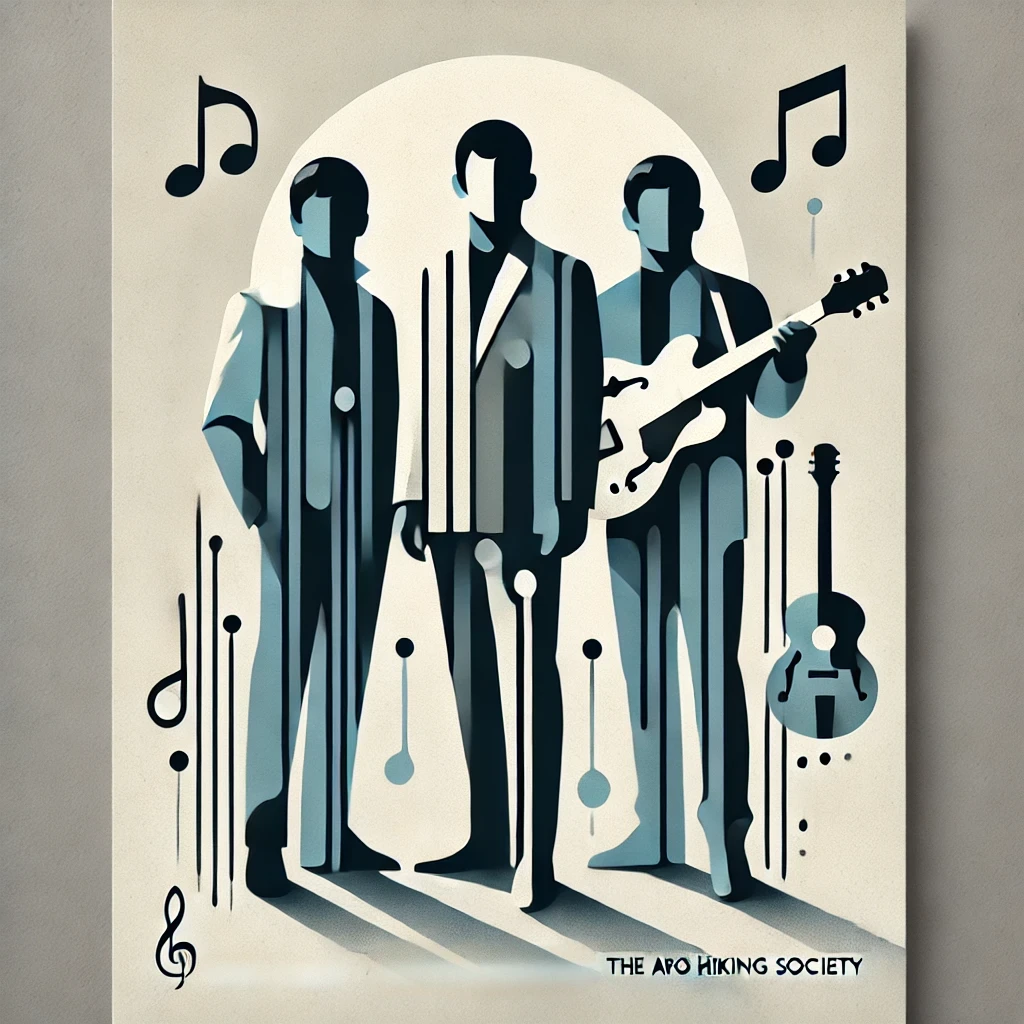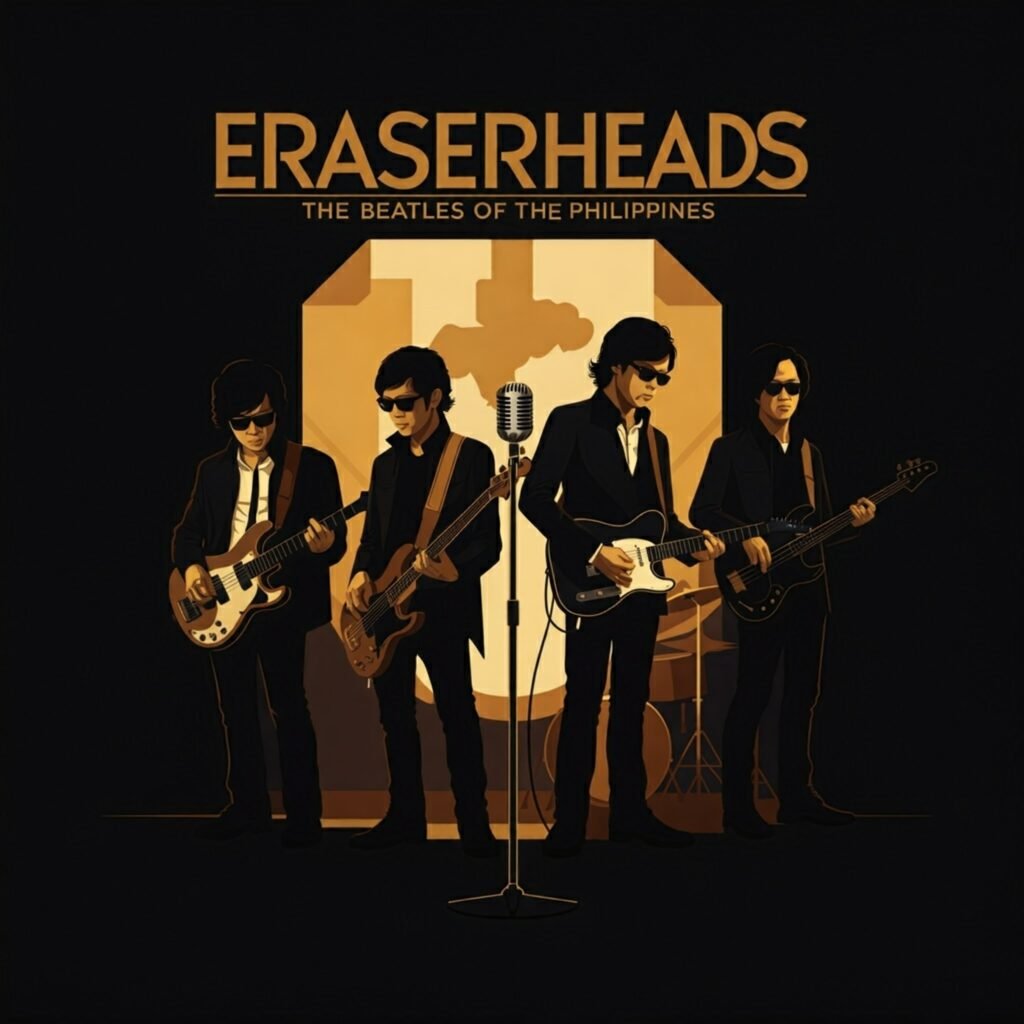Hey there, fellow OPM enthusiasts! It’s your girl Mimi, coming at you with another deep dive into the treasure trove of Filipino music. Today, we’re turning back the clock and hitting the trails with none other than the legendary Apo Hiking Society. Buckle up, because we’re about to embark on a musical journey that’ll make you fall in love with OPM all over again!
The Birth of a Legend: How Three College Buddies Became OPM Icons
From Campus Gigs to National Treasures
Picture this: It’s the early ’70s, and the University of the Philippines Diliman campus is buzzing with energy. Amidst the academic hustle and student activism, three young men—Danny Javier, Jim Paredes, and Boboy Garovillo—find themselves drawn together by a shared love for music. Little did they know that their jam sessions and campus gigs would lay the foundation for one of the most iconic groups in OPM history.
The Apo Hiking Society’s journey from college buddies to national treasures is nothing short of magical. Their name itself is a playful nod to their beginnings—”APO” stands for “Apolinario Mabini Hiking Society,” a fictional mountaineering group they conjured up for laughs. But let me tell you, there’s nothing fictional about the impact they’ve had on Filipino music.
As they transitioned from campus favorites to professional musicians, the Apo boys brought with them a fresh sound that blended folk, pop, and rock with distinctly Filipino sensibilities. Their music wasn’t just catchy; it was a mirror reflecting the hopes, dreams, and everyday experiences of Pinoys everywhere.
The Apo Sound: A Musical Revolution
Crafting Timeless Melodies
Now, let’s talk about that Apo sound. If you’ve never heard an Apo song (and honestly, where have you been?), imagine this: Take the storytelling prowess of Bob Dylan, mix it with the harmonic brilliance of The Beatles, sprinkle in some Pinoy humor, and wrap it all up in melodies so catchy they’ll be stuck in your head for days. That’s the Apo magic formula.
Their discography is a treasure trove of hits that have become part of our cultural DNA. From the nostalgic strains of “Pumapatak Na Naman Ang Ulan” to the playful banter of “Bakit Ang Babae,” each song is a masterclass in songwriting. But it’s not just about catchy tunes—the Apo boys had a knack for lyrics that could make you laugh, cry, and think, sometimes all in the same song.
Let’s break down some of their most iconic tracks:
| Song Title | Year Released | Notable Features |
|---|---|---|
| “Pumapatak Na Naman Ang Ulan” | 1978 | Nostalgic melody, poetic lyrics about lost love |
| “Panalangin” | 1980 | Romantic ballad, showcases harmonies |
| “Batang-Bata Ka Pa” | 1981 | Upbeat rhythm, playful lyrics about youth |
| “Ewan” | 1985 | Catchy pop tune, clever wordplay |
| “Awit ng Barkada” | 1982 | Anthem of friendship, memorable chorus |
These songs aren’t just hits; they’re cultural touchstones that have shaped the OPM landscape. The Apo’s ability to craft melodies that stick with you and lyrics that speak to the Filipino experience is unparalleled. It’s no wonder their music has stood the test of time, resonating with generation after generation of Pinoy music lovers.
More Than Just Musicians: The Apo as Cultural Icons
Voices of a Generation
But here’s the thing about the Apo Hiking Society—they weren’t just musicians; they were cultural icons. In a time of political turmoil and social change, their music became a unifying force. They tackled social issues with wit and wisdom, using their platform to spark conversations and inspire change.
Take “American Junk,” for instance. On the surface, it’s a catchy tune about cultural imperialism, but dig deeper, and you’ll find a biting commentary on our complex relationship with American influence. Or “Handog ng Pilipino sa Mundo,” an anthem that captured the spirit of the People Power Revolution. These weren’t just songs; they were rallying cries, pieces of our history set to music.
The Apo’s influence extended beyond their music. They were pioneers in the entertainment industry, venturing into television, film, and even literature. Remember “Mga Kuwento ng Apo”? That book was my introduction to their wit and wisdom outside of their songs. It’s a testament to their versatility as artists and their deep connection with Filipino culture.
The Apo Legacy: Inspiring Generations of OPM Artists
Paving the Way for Future OPM Stars
Now, let’s talk legacy. The impact of the Apo Hiking Society on OPM can’t be overstated. They didn’t just create great music; they paved the way for generations of Filipino artists to follow. Their success showed that OPM could be both commercially viable and artistically meaningful.
Just look at the artists who’ve cited the Apo as influences:
| Artist | Known For | Apo Influence |
|---|---|---|
| Ebe Dancel | Frontman of Sugarfree | Cites Apo’s storytelling in lyrics |
| Yeng Constantino | Pop-rock singer-songwriter | Inspired by Apo’s blend of genres |
| Ben&Ben | Folk-pop band | Influenced by Apo’s harmonies and social commentary |
| Gloc-9 | Rapper | Admires Apo’s lyrical prowess and social consciousness |
| Moira Dela Torre | Ballad singer | Draws from Apo’s emotional depth in songwriting |
These artists, spanning different genres and generations, all carry a piece of the Apo legacy in their music. It’s like the Apo planted seeds of creativity that have blossomed into the diverse OPM landscape we have today.
The Apo Sound in the Digital Age: Still Relevant, Still Rocking
Old School Meets New Cool
Now, you might be thinking, “Mimi, that’s all great, but how does a group from the ’70s stay relevant in the age of streaming and TikTok?” Well, let me tell you, the Apo magic is alive and well in the digital era!
Their music has found new life on streaming platforms, introducing a whole new generation to their timeless hits. It’s not uncommon to hear an Apo song playing in a hipster café in Maginhawa or to see young artists covering their tracks on YouTube. Their music has this incredible ability to bridge generational gaps—I’ve seen families belting out “Kabilugan ng Buwan” together at karaoke nights!
But it’s not just about nostalgia. The themes in Apo’s music—love, friendship, social issues—are as relevant today as they were 40 years ago. Their songs continue to resonate because they speak to the core of the Filipino experience. In a world that’s constantly changing, there’s something comforting about music that feels like home.
The Apo’s Musical Journey: A Timeline of Triumphs
Charting the Course of OPM History
Let’s take a walk down memory lane and revisit some of the key moments in the Apo Hiking Society’s incredible journey:
| Year | Milestone |
|---|---|
| 1969 | Formation of the group at UP Diliman |
| 1973 | Release of their first album, “Collector’s Item” |
| 1978 | “Pumapatak Na Naman Ang Ulan” becomes a massive hit |
| 1980 | “Panalangin” cements their status as OPM legends |
| 1986 | “Handog ng Pilipino sa Mundo” becomes an anthem of democracy |
| 1990s | Venture into television with “Sa Linggo nAPO Sila” |
| 2009 | Farewell concert “Apo of the Philippines” at the Araneta Coliseum |
| 2010 | Official retirement of the group |
Each of these milestones represents a chapter in the story of OPM. The Apo Hiking Society didn’t just witness the evolution of Filipino music—they were active participants, shaping its direction and inspiring countless others along the way.
The Apo’s Enduring Influence: More Than Just Music
Shaping Filipino Pop Culture
The Apo Hiking Society’s influence extends far beyond the realm of music. They’ve left an indelible mark on Filipino pop culture, becoming synonymous with wit, creativity, and social consciousness. Their impact can be seen in various aspects of Philippine entertainment and society:
- Television: The group’s foray into TV with “Sa Linggo nAPO Sila” showcased their versatility as entertainers and paved the way for musician-led variety shows.
- Advertising: Their catchy jingles for various brands became part of the collective memory of Filipinos, blurring the lines between art and commerce in a way that was uniquely Apo.
- Social Activism: Through their music and public personas, the Apo members became voices for social change, inspiring a generation to be more socially aware and engaged.
- Literature: With books like “Mga Kuwento ng Apo,” they showed that their storytelling prowess wasn’t limited to songwriting.
- Fashion: The Apo’s distinct style—a blend of casual cool and Filipino flair—influenced fashion trends throughout their career.
Their multifaceted contributions to Filipino culture make them more than just musicians; they’re cultural icons whose influence can still be felt today.
The Apo’s Musical DNA: Deconstructing Their Unique Sound
Breaking Down the Magic
What made the Apo Hiking Society’s music so special? Let’s break it down:
- Harmonies: The blending of their voices created a unique sound that became their signature. The way Danny, Jim, and Boboy’s voices complemented each other was pure musical chemistry.
- Lyrics: Their songs were poetry set to music. They had a knack for capturing complex emotions and social issues in simple, relatable terms.
- Genre-Blending: The Apo didn’t confine themselves to a single genre. They effortlessly mixed folk, pop, rock, and even elements of traditional Filipino music.
- Humor: Many of their songs incorporated witty wordplay and humorous situations, making them both entertaining and thought-provoking.
- Storytelling: Each song was like a mini-movie, painting vivid pictures and telling compelling stories in just a few minutes.
This combination of elements created a sound that was distinctly Apo—a sound that has become an integral part of the OPM canon.
The Apo’s Global Reach: Bringing OPM to the World Stage
Filipino Music Without Borders
While the Apo Hiking Society is undoubtedly a Filipino treasure, their influence has reached far beyond our shores. They were among the first OPM artists to gain recognition internationally, paving the way for the global appreciation of Filipino music.
Their performances abroad, including shows in the United States, Europe, and other parts of Asia, showcased the quality and appeal of OPM to international audiences. Songs like “Panalangin” and “Ewan” found fans among non-Filipino listeners, proving that great music transcends language barriers.
The Apo’s success on the global stage opened doors for future generations of Filipino artists. They showed that OPM could hold its own against international acts, instilling a sense of pride in Filipino musical talent.
The Apo Legacy: Keeping the Music Alive
Passing the Torch to New Generations
Even though the Apo Hiking Society officially retired in 2010, their music continues to live on. Here’s how their legacy is being preserved and celebrated:
- Tribute Concerts: Various artists have come together to perform Apo songs in tribute concerts, introducing their music to new audiences.
- Cover Versions: Contemporary artists regularly release covers of Apo hits, putting their own spin on these classic songs.
- Music Education: The Apo’s songs are often used in music classes to teach songwriting and composition, ensuring that future generations understand their importance in OPM history.
- Documentaries and Biopics: There have been talks of producing documentaries and even a biopic about the group, which would further cement their place in Filipino cultural history.
- Digital Preservation: Efforts are being made to remaster and digitally preserve the Apo’s entire discography, making it accessible to music lovers in the digital age.
These initiatives ensure that the Apo’s music and legacy will continue to inspire and entertain for generations to come.
Conclusion: The Apo Hiking Society – Forever in Our Hearts and Playlists
As we wrap up this musical journey through the legacy of the Apo Hiking Society, I can’t help but feel a sense of awe and gratitude. These three college buddies who started jamming together in UP Diliman went on to become the soundtrack of our lives, the voice of our experiences, and the beating heart of OPM.
Their music is more than just a collection of catchy tunes—it’s a time machine, a mirror, and a crystal ball all rolled into one. It takes us back to simpler times, reflects our current realities, and gives us hope for the future. The Apo Hiking Society didn’t just make music; they created a legacy that continues to shape and inspire Filipino music and culture.
So the next time you hear “Panalangin” playing on the radio, or find yourself humming “Pumapatak Na Naman Ang Ulan” on a rainy day, take a moment to appreciate the magic of the Apo. Their songs are not just melodies; they’re pieces of our collective soul, reminders of who we are and what we can be.
To Danny, Jim, and Boboy—salamat. Thank you for the music, the memories, and for showing us that OPM is world-class. Your songs will forever be the soundtrack of our lives, the anthem of our experiences, and the heartbeat of Filipino music.
And to all you music lovers out there, keep the Apo spirit alive. Share their music, tell their stories, and let the magic of OPM continue to inspire and unite us. Because in every beat of an Apo song, there’s a story; in every lyric, a piece of our soul.
Rock on, OPM fam! This is Mimi, signing off and heading out to blast some Apo tunes. Peace out!
Disclaimer: While every effort has been made to ensure the accuracy of the information presented in this article, please note that some details may be subject to interpretation or may have changed over time. If you notice any inaccuracies, please report them so we can correct them promptly. The views expressed in this article are those of the author and do not necessarily reflect the official policy or position of any agency or artist mentioned.





I enjoy your writing style genuinely loving this site.